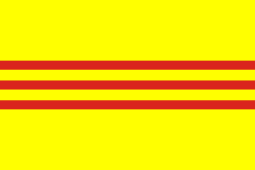M2 Half Track Car
| M2 Half Track | |
|---|---|
|
US | |
| Type | Half-track artillery tractor/reconnaissance vehicle |
| Place of origin | United States |
| Production history | |
| Designer | Firestone Defense Division |
| Specifications | |
| Weight | 9 metric tons |
| Length | 5.96 m (19 ft 7 in) |
| Width | 2.2 m (7 ft 3 in) |
| Height | 2.26 m (7 ft 5 in) |
| Crew | 2 + 7 passengers |
|
| |
| Armor | 6–12 mm |
Main armament | 0.5 inch M2 Browning heavy machine gun |
Secondary armament | 14 mines, 10 hand grenades[1] |
| Engine |
386 cu in (6.33 l) White 160AX inline six[1] 148 hp (110 kW; 150 PS)[1] |
| Suspension | Wheeled front axle, rear track |
Operational range | 220 mi (350 km) (average)[1] |
| Speed | 45 mph (72 km/h)[1] |
The M2 Half Track Car was a half-track armored vehicle produced by the United States during World War II. Its design drew upon half-tracks brought in from France in the 1930s, employing standard components supplied by U.S. truck manufacturers to speed production and reduce costs. The concept has been designed and the pilot models have been manufactured by the Firestone Tire and Rubber Company (before the prototype was officially labeled M2.)[2] Production by the White Motor Company began in 1940 and was expanded to include Autocar.
The M2 was initially intended for use as an artillery tractor, but also found use with reconnaissance units. International Harvester Company built the M9 half-track, a variant of their M5 half track, to fulfill the same purpose.
History
The half-track design had been evaluated by the US Ordnance department using Citroën-Kégresse vehicles.
The Cavalry branch of the US Army found that their wheeled armored scout cars had trouble in wet terrain due to their high ground pressure.
In 1938, the White Motor Company took the Timken rear bogie assembly from a T9 half-track truck and added it to an M3 Scout Car, creating the T7 Half-Track Car.[3] This vehicle was woefully underpowered. When a further requirement came down from US Army artillery units in 1939 for a prime mover to be used as an artillery tractor, a vehicle with an uprated engine was developed, which was designated the Half Track Scout Car T14.
By 1940, the vehicle had been standardized as the M2 Half-Track car. The M2 design was recognized as having the potential for general mechanized infantry use, which spawned the larger bodied M3 Half Track. Both the M2 and M3 were ordered into production in late 1940, with M2 contracts let to Autocar, White and Diamond T. The first vehicles were received by the Army in 1941.
The M2 was supplied to artillery units as the prime mover and ammunition carrier for the 105mm howitzer, and to armored infantry units for carrying machine gun squads. It was also issued to armored reconnaissance units[4] as an interim solution until more specialized vehicles could be fielded.
Between 1942 and 1943, both the M2 and M3 would receive a number of modifications to the drive train, engine, and stowage, among other things.
Total production of M2 and derivatives by White was about 13,500 units. To meet the needs of Lend-Lease to the Allies, the International Harvester Company produced 3,500 units of the M9. The M9 was the same as the IH-produced M5 but with different internal stowage and apart from using IH mechanical components the M9 was longer than the M2.
Use
The first M2s were fielded in 1941, and would be used in the Philippines, North Africa, and Europe by the U.S. Army, and around the Pacific by the Marines. About 800 M2 and M9 halftracks were sent to the Soviet Union. Many remaining vehicles initially destined for lend-lease were transferred to other U.S. allies, primarily in South America. These vehicles often received a number of upgrades designed at extending service life. Nicaragua's National Guard received 10 M2s in 1942, which saw heavy action during the 1978-79 Nicaraguan Revolution. The Argentine Army retired its last upgraded M9 in 2006 and donated them to Bolivia.
In 1947, the Finnish heavy vehicle producer Vanajan Autotehdas bought 425 M2 Half track vehicles from the Western Allied surplus stocks located in France and Germany. The vehicles were delivered without armour.[5] 359 units were converted into field and forest clearing vehicles, some were scrapped for parts and 60 units were equipped with conventional rear axles and converted into 4×4 or 4×2 trucks. They were badged as Vanaja VaWh. The last units were sold in 1952.[6]
Former operators
-
 United States
United States -
 United Kingdom
United Kingdom -
 Soviet Union
Soviet Union -
 Czechoslovakia
Czechoslovakia -
 Chile
Chile -
 France
France -
 Greece
Greece -
 Portugal
Portugal -
 Brazil
Brazil -
 Dominican Republic – Dominican Army 16 M3 version still in service.
Dominican Republic – Dominican Army 16 M3 version still in service. -
 Paraguay 23 still in service.
Paraguay 23 still in service. -
.svg.png) Philippines
Philippines -
 Poland
Poland -
 Israel - 2,000 modified M3/M9 versions on service with the IDF.
Israel - 2,000 modified M3/M9 versions on service with the IDF. -
 Mexico
Mexico -
.svg.png) Belgium
Belgium -
 Netherlands
Netherlands -
 Cambodia
Cambodia -
 South Vietnam
South Vietnam -
 Laos
Laos -
 Lebanon - M3 in service with the Lebanese Army between 1949 - 1970. Ex-IDF versions supplied by Israel to the Lebanese Forces and South Lebanon Army passed on to the Amal Movement, Hezbollah, Lebanese Army.
Lebanon - M3 in service with the Lebanese Army between 1949 - 1970. Ex-IDF versions supplied by Israel to the Lebanese Forces and South Lebanon Army passed on to the Amal Movement, Hezbollah, Lebanese Army. -
 Argentina
Argentina -
 Finland
Finland
Variants


Prime Mover/Scout Vehicle
- M2 - White Half-Track with White 160AX engine. Fitted with a skate rail mount, featuring an M2HB machine gun.
- M9 - International Harvester built half-track, developed to complement the M2 for Lend-Lease, but did not feature the short hull of the M2. Also, it did not feature the rear access doors, and is outwardly very similar to the M5, but with a different internal configuration.
- M9A1 - As for the M2A1, an M9 with the M49 machine gun mount. The M9A1 had a rear door.
- M2E6/M2A1 - Any vehicle with the improved M49 machine gun ring mount over the right hand front seat. Three fixed pintle mounts for 0.30 machine guns were often fitted at the unit level in the field.
- M9 - International Harvester built half-track, developed to complement the M2 for Lend-Lease, but did not feature the short hull of the M2. Also, it did not feature the rear access doors, and is outwardly very similar to the M5, but with a different internal configuration.
Self-propelled guns
- M4/M4A1 81mm MMC - M2 based Motor Mortar Carriage equipped with the 81 mm M1 mortar. The mortar was intended to be fired dismounted from the vehicle, but could be fired in an emergency to the rear from a base inside the vehicle. The A1 modification allowed the weapon to be fixed facing forward and fired from within the vehicle.
- M2 w/ M3 37 mm - Mechanized infantry units in the US Army were supposed to receive the M6 Gun Motor Carriage, based on Dodge light trucks. With the overall failure in combat of these vehicles, some units removed the M3 37 mm gun and its assembly and mounted them on M2 Half-Track Cars.
Anti-aircraft variants
- T1E1 - M2 based mobile anti-aircraft gun featuring an open rear with a Bendix mount featuring two .50 inch (12.7 mm) M2 machine guns. The Bendix mount proved to be unsatisfactory. Prototype only.
- T1E2 - T1 with Maxson M33 mount in the place of the Bendix mount. The M33 mount also featured two .50 inch M2 machine guns. Would be developed into the M3 based T1E4.
- T1E3 - T1 fitted with a partial hard top and a Martin turret, identical to that used on the Boeing B-17 Flying Fortress. Proved to be overcomplicated and was ill-suited to the space available in the M2. Prototype only.
- T28 CGMC - M2 based Combination Gun Motor Carriage with a single 37 mm Gun M1A2 autocannon flanked by two .50 inch M2 machine guns. The side armor was removed in order to make room for the mount. The project was canceled in 1942 but then revived the same year, when a decision was made to use the longer M3 Half-Track Personnel Carrier chassis for the subsequent T28E1
- T10 - Variant to test the feasibility of mounting US made copies of the Hispano-Suiza HS.404 20 mm cannon on modified Maxson mounts. Developed into the T10E1 based on the longer M3 Half Track Personnel Carrier chassis.
See also
- M3 Half-track
- List of U.S. military vehicles by supply catalog designation
- List of U.S. military vehicles by model number
Notes
References
- Blomberg, Olli; Vehicles, Patria (2003). Yhteissisusta Vanajan ja Sisun kautta Patriaan (in Finnish). Hämeenlinna: Patria Vehicles Oy. ISBN 978-952-91-5613-9.
- Janda, Patryk (2009). Half-Track vol. I. Gdańsk, Poland: Aj-Press Publishing. ISBN 978-83-7237-207-9.
- Green, Michael ; Green, Gladys. Weapons of Patton's Armies. MBI Publishing Company, 2000
- Mesko, Jim. M3 Half-tracks in Action. Carrollton, TX: Squadron/Signal Publications, 1996
- SNL G102
- TM 9-2800 army vehicles dated 1947
- United States, War Department. TM 9-710 Basic Half-Track Vehicles (White, Autocar, and Diamond T). Washington, DC: War Department, 1944.
- Zaloga, Steven J. (2004). M3 Infantry Half-Track 1940-73. Oxford, UK: Osprey Publishing.
External links
| Wikimedia Commons has media related to M2 Halftrack. |
